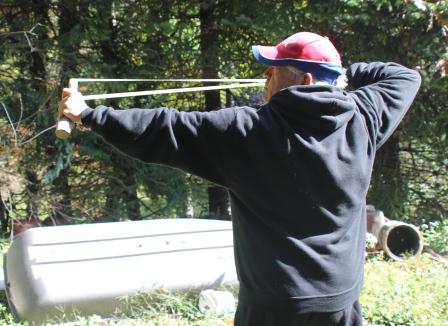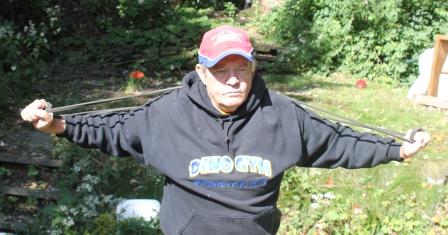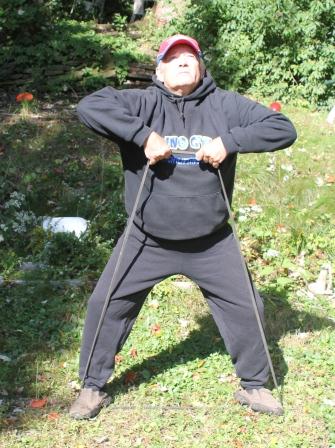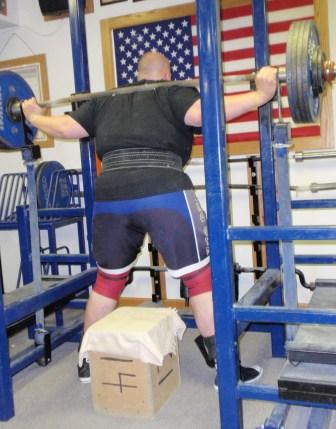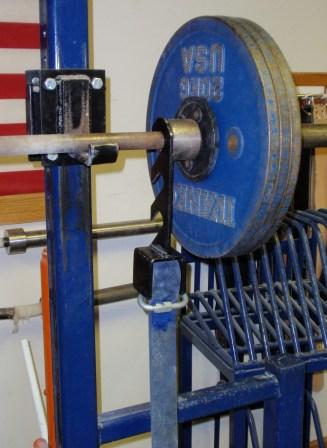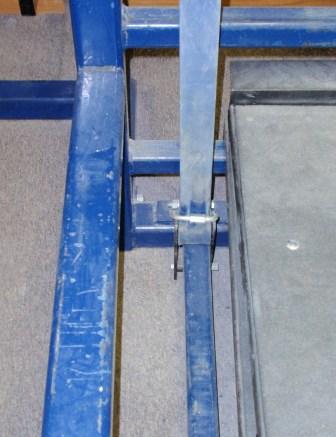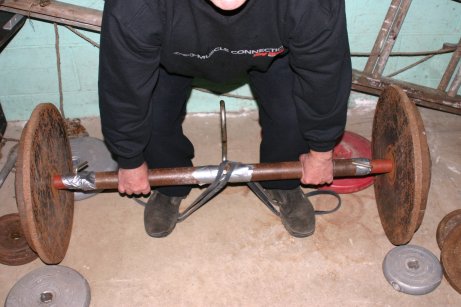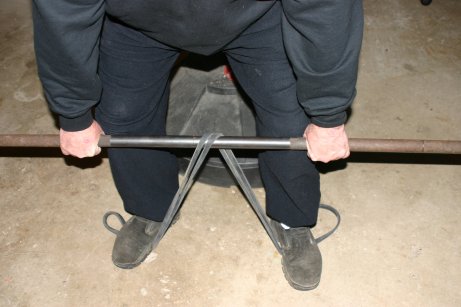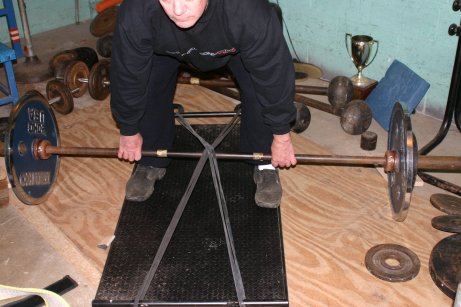Big Inch Lifts
By John McKean
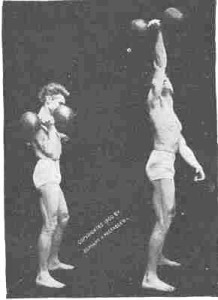
American health pioneer, Bernaar Macfadden trained extensively with cables in a manner similar to the “big inch ” concept below. Even way back in 1901 Macfadden could’ve set USAWA records (if we had been around over 100 years ago) that lasted a century with tremendous poundages in dumbbell overhead and hold-out lifts for the 65K class!
“Andraes,” I asked my 11-year-old grandson, “did I ever tell you about my gold mine in Alaska?” Dra just rolled his eyes skyward, certain that he was about to become a captive audience and suffer through another one of my cornball stories!
“Ah c’mon, Paw” replied the wise-beyond-his-years sixth grader. “You’re sure old enough, but nobody ever mentioned you dog-sledding up North to the Klondike gold rush!”
I went on to explain that when I was his age, a breakfast cereal giant offered within each box a “genuine deed” for Alaskan real estate! The company on each deed proclaimed themselves as the “Big Inch Land Company,” and that’s exactly what the document allotted to you – one square inch of “prime” property with a numbered lot and everything! I couldn’t stand the soggy cereal, so only acquired a grand total of 3 square inches! (My gold must still be awaiting me!!)
Explaining to Draes that this “Big Inch” name was vividly recalled by a summer-long lifting innovation, I went on to describe what soon will be his training procedure through the coming fall and winter! Of course, this will be an advancement in my usual “flex band over barbell” concept.
First, a quick history lesson. Back when Dr. John Ziegler was instructing famous lifters Bill March and Lou Riecke on the virtues of isometrics and power rack work, he emphasized that complete concentration on the iso hold and absolute maximum effort was required. Few lifters could handle that type of commitment to a non moving sticking point, so wily ole Doc Ziegler HYPNOTIZED these two future world record holders before each training session!
Well, Doc Ziegler is gone, and most of us have little access to pro hypnotists in our gyms or garages (and some, like my wife Marilyn, says ya gotta have some mind power in order to BE hypnotized, and I don’t qualify!). So I discovered a way to push myself beyond what I think is a maximum effort iso! From other stories I’ve done on flex band isos, using various strength rubber strands over barbells, dumbbells, kettlebells, or just a very heavy duty band itself, you know that for practically any lift that initial experimenting will provide enough resistance that the movement won’t be permitted full extension. You will grind to a halt somewhere before completion and be forced into a severe muscle contracting iso! I USED to believe this was that 100% limit that we all strive to achieve. However I discovered that if I’d hold for a few seconds, then gutted it up slightly further, I could use still yieldable stretch of the bands to push just 1/2″ MORE! And, if I got my head really into it (SELF Hypnosis?), after a few seconds I could usually strain just moving one more half inch. Here, then, became my “Big Inch” for achieving new maximums in lifting stress !
Take, for instance, a Straddle Lift – after finding the right weight and band combo to insure this Jefferson will not go all the way up, place a band over the barbell, then stomp on the band ends at the floor. Stand up until the band will allow absolutely no more positive movement. Hold for maybe 3 seconds. Then convince yourself that you can “probably” yet manage a mere 1/2″ more. Do it! After 3 seconds of this, WILL yourself to another 1/2 inch! Hang on for a final 3 seconds. Ziegler, March, and Riecke would be proud: You’ve managed the ultra max “Big Inch” which will go MILES toward progress and gains!
As I was detailing this procedure to young Dra, he chirped out, “Hey, Paw, I’ve got a Big Inch of my own!”
“Uh oh,” I thought. “He’s getting to be about THAT age!”
But I was a bit relieved to hear the not so little lad respond, Gramma measured my height and at 5’3 I’m now a BIG INCH taller than you!!”
